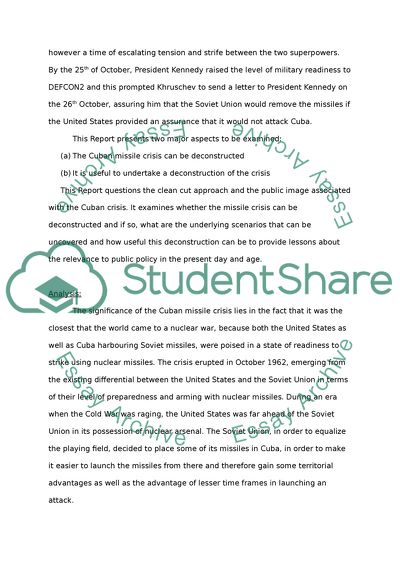Cite this document
(Deconstruction of Cuban Missile Crisis Coursework, n.d.)
Deconstruction of Cuban Missile Crisis Coursework. Retrieved from https://studentshare.org/politics/1731689-how-can-the-national-security-discourses-employed-during-the-cuban-missile-crisis-be-deconstructed-what-is-the-use-of-doing-so
Deconstruction of Cuban Missile Crisis Coursework. Retrieved from https://studentshare.org/politics/1731689-how-can-the-national-security-discourses-employed-during-the-cuban-missile-crisis-be-deconstructed-what-is-the-use-of-doing-so
(Deconstruction of Cuban Missile Crisis Coursework)
Deconstruction of Cuban Missile Crisis Coursework. https://studentshare.org/politics/1731689-how-can-the-national-security-discourses-employed-during-the-cuban-missile-crisis-be-deconstructed-what-is-the-use-of-doing-so.
Deconstruction of Cuban Missile Crisis Coursework. https://studentshare.org/politics/1731689-how-can-the-national-security-discourses-employed-during-the-cuban-missile-crisis-be-deconstructed-what-is-the-use-of-doing-so.
“Deconstruction of Cuban Missile Crisis Coursework”, n.d. https://studentshare.org/politics/1731689-how-can-the-national-security-discourses-employed-during-the-cuban-missile-crisis-be-deconstructed-what-is-the-use-of-doing-so.


